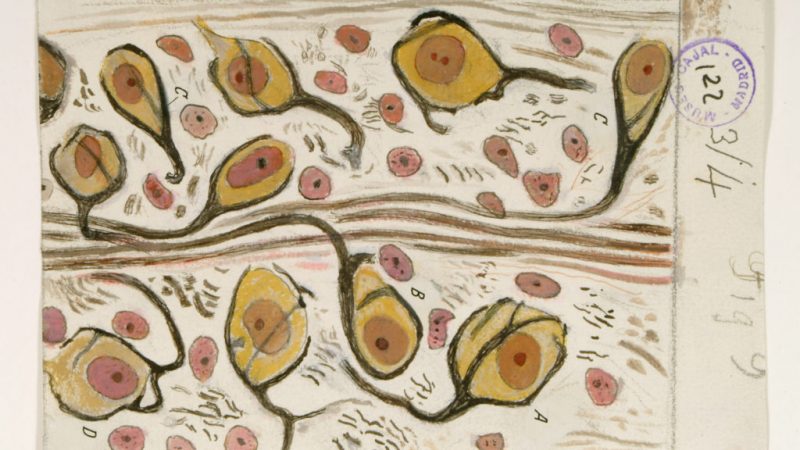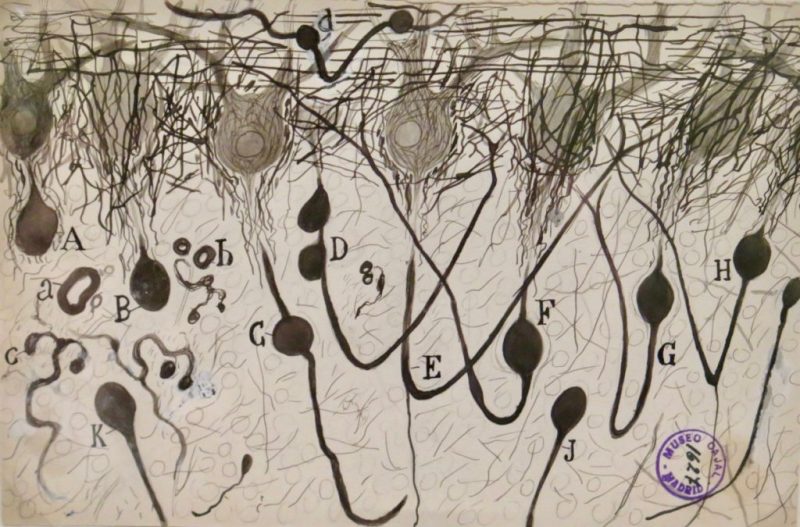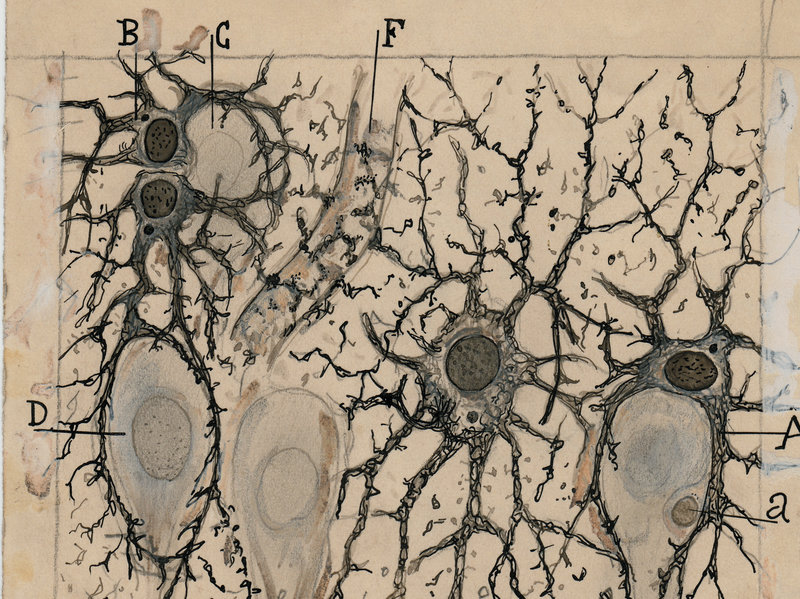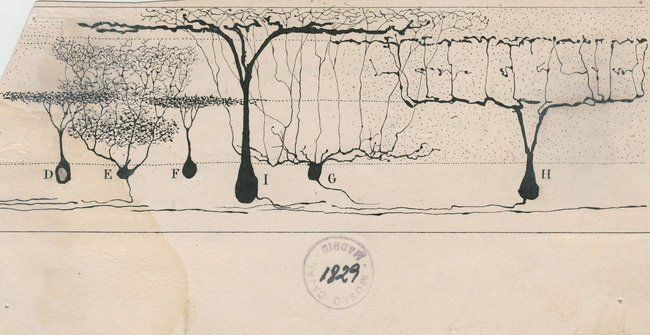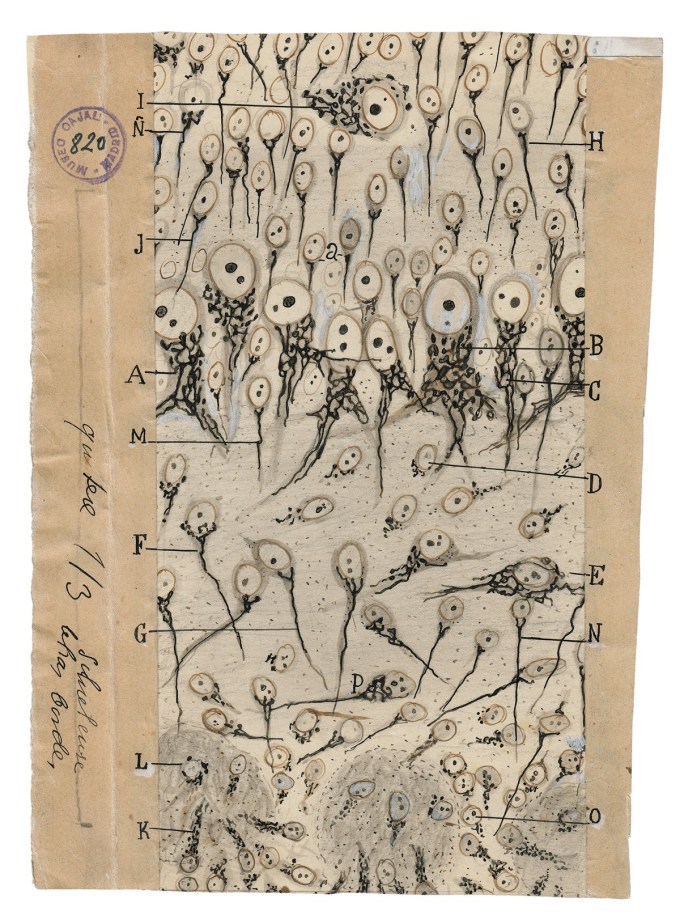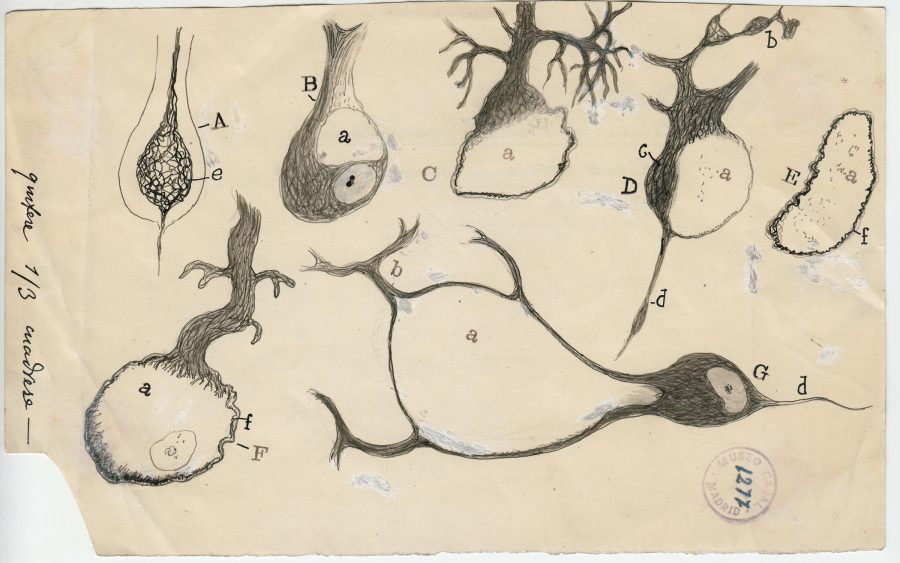[Most Recent Entries] [Calendar View]
Monday, April 8th, 2019
| Time | Event |
| 8:00a | Watch Great Directors, a Documentary That Explores the Minds of 10 Great Auteurs: David Lynch, Agnès Varda, Richard Linklater & More
When we first start watching movies, often we decide what to watch by settling on a favorite genre, divisions first solidified by video-store shelves: action, comedy, drama, science fiction, and so on. When we've watched more movies, many of us move on to following the work of a particular actor, which takes us across not just genres but eras as well. And practically all cinephiles will remember when it dawned on us that no figure could better guide our viewing than the director — about the same time we usually learn the term auteur, which identifies certain directors as the primary "authors" of their films. From that point on, we had only to master the knowledge of as many directors' filmographies as possible, then determine those too whom we would pledge our allegiance — thus forging bonds with (or drawing battle lines against) all other film fans. If the best movies come primarily from the minds of their directors, then there must be a great deal else of interest in those directorial minds. Or so implicitly argues Angela Ismailos' 2010 documentary Great Directors, which consists of interviews with ten auteurs of the late 20th and early 21st century whose work has not only drawn critical acclaim but also provoked the full range of audience opinion, even inspiring some viewers to dedicate themselves to cinema. "I wanted to cover the French cinema and I love the controversial cinema of Catherine Breilliat and how she portrays the emotional and physical travails of women in her cinema," Ismailos says of the project's origin in an interview with Filmmaker magazine. Then came Agnès Varda, and after her a lineup including Bernardo Bertolucci, Liliana Cavani, Todd Haynes, Richard Linklater, John Sayles, Ken Loach, and Stephen Frears. "The last director I added to the film was David Lynch. He was the most difficult to get." Put together, these ten filmographies — containing pictures from Matewan to My Beautiful Laundrette, The Last Emperor to Velvet Goldmine, Poor Cow to Eraserhead, Fat Girl to Slacker — contain an impressively wide range of cinematic sensibilities. But what do the ten directors, coming as they do from several different countries and cultures, have in common? "In their films they’re trying… to break moral standards," says Ismailos. "They are not surrendering to preconceived notions of commerce or audience popularity or preconception of what cinema should be. I believe through the years they are constantly asking their audience to grow and face the uncertainties and unpredictability of adult life. This is the cinema I personally love." She's certainly not the only one, and all the rest of us with an interest in films of that kind — and thus an interest in directors of this kind — will certainly be glad that she's made Great Directors free to view online. Great Directors will be added to our list of Free Documentaries, a subset of our collection, 1,150 Free Movies Online: Great Classics, Indies, Noir, Westerns, etc. Related Content: Stanley Kubrick’s Rare 1965 Interview with The New Yorker Listen to Eight Interviews of Orson Welles by Filmmaker Peter Bogdanovich (1969-1972) Based in Seoul, Colin Marshall writes and broadcasts on cities, language, and culture. His projects include the book The Stateless City: a Walk through 21st-Century Los Angeles and the video series The City in Cinema. Follow him on Twitter at @colinmarshall or on Facebook. Watch Great Directors, a Documentary That Explores the Minds of 10 Great Auteurs: David Lynch, Agnès Varda, Richard Linklater & More is a post from: Open Culture. Follow us on Facebook, Twitter, and Google Plus, or get our Daily Email. And don't miss our big collections of Free Online Courses, Free Online Movies, Free eBooks, Free Audio Books, Free Foreign Language Lessons, and MOOCs. |
| 2:00p | Deconstructing Steely Dan: The Band That Was More Than Just a Band How do you explain Steely Dan to someone who’s never heard of them? Two pretentious, perfectionistic, and very talented white guys who love Bebop and R&B meet in passing at Bard College in 1967. They start a series of bands, one of them featuring Chevy Chase on drums. They rub everyone the wrong way and write songs too complicated for pop and TV but too good to go away, so they become a celebrated studio unit, named after a fictional steam-powered dildo in a William S. Burroughs’ Naked Lunch. They obsess over studio production, putting together a revolving cast of high-end session musicians and pushing them through take after take. They carefully edit songs together from hours and hours of tape. And somehow, they end up creating some of the funkiest music of the 70s—the smoothest of smooth jazz, the yacht-iest of yacht rock… then, a generation later, they become perhaps the most sampled band of all time, their grooves a sine qua non of hip hop’s evolution…. Hardly sounds plausible. But there it is: Donald Fagen and Walter Becker—two super-fans of the genres they creatively appropriated—made some incredible, snarling, cynical, viciously groovy easy listening music, and it has more than held up over the decades since they released their debut album Can’t Buy a Thrill in 1972. Despite decades of critical praise and hit after hit, they also remain a profoundly misunderstood band. That is, if we can even call them a band. The Polyphonic video above convincingly argues otherwise. Becker and Fagen maintained total control at all times over the project, and mostly resisted touring to focus on building albums out of thousands of perfect takes. They were curating “an aesthetic… one that relied on intense perfectionism” and satirical, oblique lyricism. Something of a conceptual art project that never once broke character. The elements were there from the beginning—in “Do it Again,” for example, from their first album—and they grew more sophisticated and calculated throughout the decade. The band’s obsession with quality culminated in their masterpiece Aja and their swan song (before re-uniting 20 years later), the slick and bitter Gaucho. Their hyper-critical detachment can be off-putting to people who prefer to see musicians telegraph passionate authenticity, but for Steely Dan fans, the aloofness is part of the appeal. Major guitar-rock hit “Reelin’ in the Years,” a song Fagen called “dumb, but effective,” satirizes 60s nostalgia long before that became a major cultural phenomenon. The song mocks the very people who most respond to it, like Springsteen’s “Born in the U.S.A.” tips the sacred cows of many of its biggest fans. Even Steely Dan’s detractors can’t help but admire their ability to choose the perfect players for every song and to coax, or browbeat, out of them the best possible performances. Their perfectionism and studio polish, qualities you’ll learn much more about in the video, masked a dark, subversive core. “For Fagen and Becker,” writes Chris Morris at Variety, “the beautifully tooled music they made with their studio cohorts served as the ultimate alienation effect. The true import of their work, which addressed forbidden impulses that moved to the edge of crime and frequently beyond, was always garbed in satiny elegance; its sardonic and horrific essence was marketed as the purest ear candy.” Or, maybe, put differently, if you get the dark humor of Patrick Bateman earnestly extolling the virtues of Huey Lewis and the News, Whitney Houston, and Phil Collins before a captive audience of his murder victims in Mary Harron’s American Psycho, there’s a good chance you get Steely Dan. As Jay Black, lead singer of Jay and the Americans, once said, Becker and Fagen were “the Manson and Starkweather of rock ‘n’ roll,” referring, of course, to Charles Manson and spree killer Charles Starkweather. With that in mind, you might never hear “Rikki Don’t Lose that Number” the same way again. Related Content: How Steely Dan Wrote “Deacon Blues,” the Song Audiophiles Use to Test High-End Stereos Josh Jones is a writer and musician based in Durham, NC. Follow him at @jdmagness Deconstructing Steely Dan: The Band That Was More Than Just a Band is a post from: Open Culture. Follow us on Facebook, Twitter, and Google Plus, or get our Daily Email. And don't miss our big collections of Free Online Courses, Free Online Movies, Free eBooks, Free Audio Books, Free Foreign Language Lessons, and MOOCs. |
| 5:39p | Cinema Lovers Rejoice, the New Criterion Channel Launches Today: Get a 14-Day Free Trial If you lamented the demise of Filmstruck last year, you'll surely welcome the rise of the new Criterion Channel. It launches today. According to Criterion, the "new service will host the Criterion Collection and Janus Films’ ever-growing library of more than 1,000 feature films, 350 shorts, and 3,500 supplementary features, including trailers, introductions, behind-the-scenes documentaries, interviews, video essays, commentary tracks, and rare archival footage." In addition, you will get access to a "constantly refreshed selections of Hollywood, international, art-house, and independent movies." The Criterion Channel will launch in the U.S. and Canada. It can be accessed on desktop browsers and also apps for Apple TV, Amazon Fire, Roku, iOS, and Android and Android TV devices. If you sign up now, you can get a 14 day free trial. Find more information on the channel here. Follow Open Culture on Facebook and Twitter and share intelligent media with your friends. Or better yet, sign up for our daily email and get a daily dose of Open Culture in your inbox. If you'd like to support Open Culture and our mission, please consider making a donation to our site. It's hard to rely 100% on ads, and your contributions will help us provide the best free cultural and educational materials. Cinema Lovers Rejoice, the New Criterion Channel Launches Today: Get a 14-Day Free Trial is a post from: Open Culture. Follow us on Facebook, Twitter, and Google Plus, or get our Daily Email. And don't miss our big collections of Free Online Courses, Free Online Movies, Free eBooks, Free Audio Books, Free Foreign Language Lessons, and MOOCs. |
| 7:00p | Neurons as Art: See Beautiful Anatomy Drawings by the Father of Neuroscience, Santiago Ramón y Cajal
The above drawing is the sort of sublime rendering that attracts throngs of visitors to the world’s great modern art museums, but that’s not the sort of renown the artist, Nobel Prize-winning father of modern neuroscience Santiago Ramón y Cajal (1852 -1934), actively sought. Or rather, he might have back before his father, a professor of anatomy, coerced his wild young son into transferring from a provincial art academy to the medical school where he himself was employed. After a stint as an army medical officer, the artist-turned-anatomist concentrated on inflammation, cholera, and epithelial cells before zeroing in on his true muse—the central nervous system. At the time, reticular theory, which held that everything in the nervous system was part of a single continuous network, prevailed. Ramón y Cajal was able to disprove this widely held belief by using Golgi stains to support the existence of individual nervous cells—neurons—that, while not physically connected, communicated with each other through a system of axons, dendrites, and synapses. He called upon both his artistic and medical training in documenting what he observed through his microscope. His meticulous freehand drawings are far more accurate than anything that could be produced by the microscopic-image photographic tools available at the time. His precision was such that his illustrations continue to be published in medical textbooks. Further research has confirmed many of his suppositions. As art critic Roberta Smith writes in The New York Times, the drawings are “fairly hard-nosed fact if you know your science”: If you don’t, they are deep pools of suggestive motifs into which the imagination can dive. Their lines, forms and various textures of stippling, dashes and faint pencil circles would be the envy of any modern artist. That they connect with Surrealist drawing, biomorphic abstraction and exquisite doodling is only the half of it. The drawings’ pragmatic titles certainly take on a poetic quality when one considers the context of their creation:
Axon of Purkinje neurons in the cerebellum of a drowned man
The hippocampus of a man three hours after death
Glial cells of the cerebral cortex of a child His specimens were not limited to the human world:
Retina of lizard
The olfactory bulb of the dog In his book Advice for a Young Investigator, Ramón y Cajal took a holistic view of the relationship between science and the arts: The investigator ought to possess an artistic temperament that impels him to search for and admire the number, beauty, and harmony of things; and—in the struggle for life that ideas create in our minds—a sound critical judgment that is able to reject the rash impulses of daydreams in favor of those thoughts most faithfully embracing objective reality. Explore more of Ramón y Cajal’s cellular drawings in Beautiful Brain: The Drawings of Santiago Ramón y Cajal, the companion book to a recent traveling exhibition of his work. Or immerse yourself at the neural level by ordering a reproduction on a beach towel, yoga mat, cell phone case, shower curtain, or other necessity on Science Source. Related Content: Leonardo da Vinci’s Visionary Notebooks Now Online: Browse 570 Digitized Pages Two Million Wondrous Nature Illustrations Put Online by The Biodiversity Heritage Library Ayun Halliday is an author, illustrator, theater maker and Chief Primatologist of the East Village Inky zine. Join her in New York City April 15 for the next installment of her book-based variety show, Necromancers of the Public Domain. Follow her @AyunHalliday. Neurons as Art: See Beautiful Anatomy Drawings by the Father of Neuroscience, Santiago Ramón y Cajal is a post from: Open Culture. Follow us on Facebook, Twitter, and Google Plus, or get our Daily Email. And don't miss our big collections of Free Online Courses, Free Online Movies, Free eBooks, Free Audio Books, Free Foreign Language Lessons, and MOOCs. |
| << Previous Day |
2019/04/08 [Calendar] |
Next Day >> |



